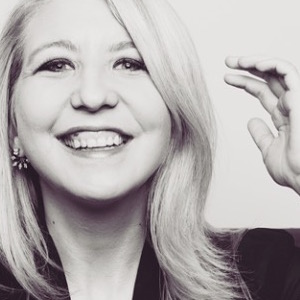Year-end packages like this are places for optimism, but I’m going to make a sad and gloomy prediction. In 2016, despite all of the exciting, important virtual reality projects and wearable tech experiments on the horizon, American newsrooms will continue to lose hundreds — if not thousands — of jobs.
 We know the primary culprits far too well by now, but I’d like to argue here that at least some of this drop is attributable to the fact that we haven’t taken the identification, training, and development of business-side talent seriously enough as an industry. In fact, it seems like we’ve hardly thought about it at all. And until that happens, journalism jobs — the kind that uncover of secrets of presidents and the crimes of priests — will continue to shrink, in 2016 and beyond.
We know the primary culprits far too well by now, but I’d like to argue here that at least some of this drop is attributable to the fact that we haven’t taken the identification, training, and development of business-side talent seriously enough as an industry. In fact, it seems like we’ve hardly thought about it at all. And until that happens, journalism jobs — the kind that uncover of secrets of presidents and the crimes of priests — will continue to shrink, in 2016 and beyond.
There is a real and troubling talent gap on the business side of news. News publishing (i.e. anything related to making money from news — circulation, advertising, etc.) still largely remains something that people fall into, not something people really seek out. In fact, I don’t think most people know the field actually exists. At Talking Points Memo, a publication known as a training ground for young business-side talent, I’d estimate that the ratio of qualified entry-level editorial applications to qualified entry-level publishing applications we receive is around 200-to-1. Meanwhile, young art enthusiasts pass through the art business program at Sotheby’s and practically claw each other’s eyes out for the opportunity to work on the commercial side of art. Similar paradigms exist on the business sides of music and film.
A century ago, we made a commitment to professionalize journalism and erected professional schools to teach skills and instill a common mission at universities like Columbia, Northwestern, and NYU. I’d like to argue that we should make a similar, industry-wide commitment to professionalize the business of news today. After a bloody decade that has left America’s newspaper newsrooms half the size they were at their peak, we are still graduating thousands of students from both undergraduate and graduate editorial programs, and there is not a single major program devoted to the business side of news. Not one. We’ve reinvented journalism school time and time again and have nobly funded countless entrepreneurial journalism fellowships aimed at equipping journalists with basic tech and business skills (“entrepreneurial journalism,” while adjacent, is a different discipline — email me and I’ll explain), but as an industry, we have done very little to identify, pipeline, and train the publishing talent that will be responsible for securing the financial future of news.
What if, inside of Columbia Journalism School, we built Columbia Publishing School? And what if we did the same at Missouri, Northwestern, and Berkeley? What if we decided to pipeline, train, and mentor future publishers, chief revenue officers, circulation directors, and sales chiefs alongside the future journalists we are teaching to code? And what if we knitted it all together with the same spiritual thread — a deep, common commitment to the First Amendment and the Fourth Estate? I’d venture to guess that the future of news could look very different indeed.
2016 is a perfect year to start this conversation. Today, at the healthiest news organizations, the Chinese Wall looks more like a picket fence. Emerging disciplines like product and audience development are starting to blur the lines between the commercial and the editorial sides of news. In the era of distributed content, social media editors are starting to sound more like circulation directors, and content-based advertising requires even the most junior ad salesperson to think like an editorial chief. These are all incredibly encouraging things. Yet we are still an economically troubled industry in which content talent outnumbers business talent 200 to 1.
I could write another 2,000 words on this topic (trust me, if you’ve ever met me at an industry conference or cocktail party, you know this is true), but I’ll hit pause for now. When you read the rest of the predictions in this collection, you’ll see that the future of news is beyond bright. Still, I don’t think anyone doubts that the news industry will continue to experience tremendous financial pressure in 2016.
Without a business plan, there is no freedom of the press. That’s a line I keep on my Twitter bio, and pinned under a magnet on my kitchen fridge. It’s attributable to an Arab Spring-era Egyptian publisher, whose truth-to-power newspaper was shuttered not because of totalitarian repression, but simply because it ran out of cash. As an industry, we know far too well by now that news needs a business plan. But who will make it? Who will strike the deals, construct the financial models, and sell the ads that will keep the lights on in foreign bureaus across the world? I think it’s time for us to have that conversation. So let me toss my little penny into this fountain, and make the hopeful prediction that 2016 is the year that we start.
Amanda Hale is vice president at Talking Points Memo.